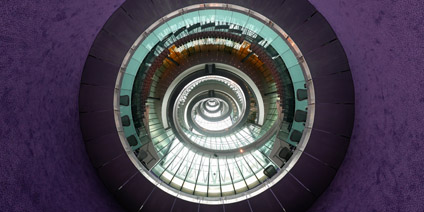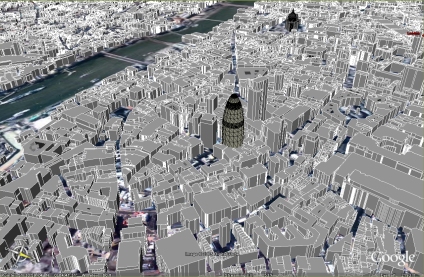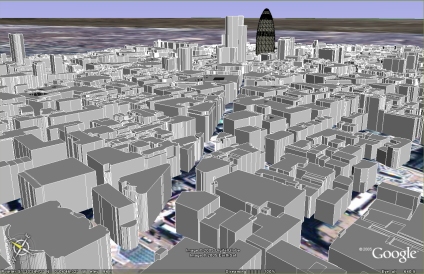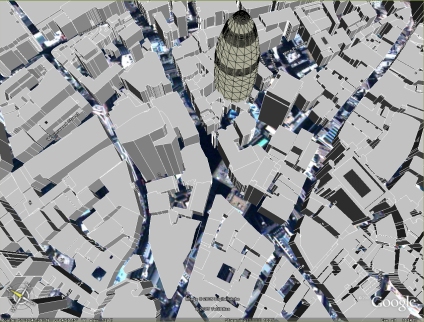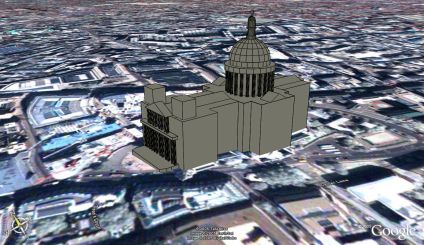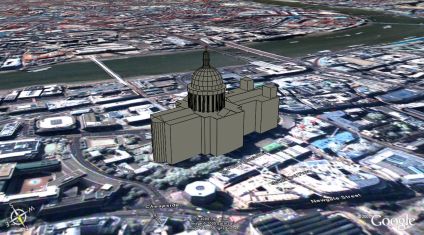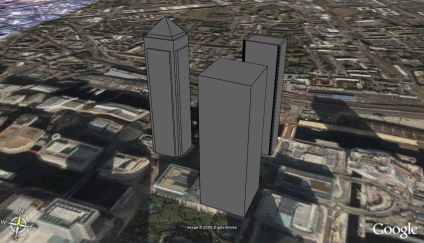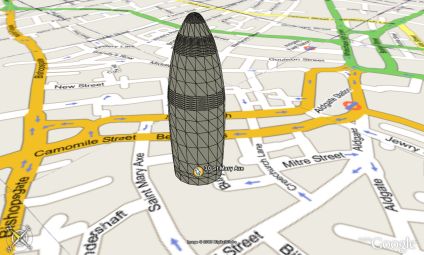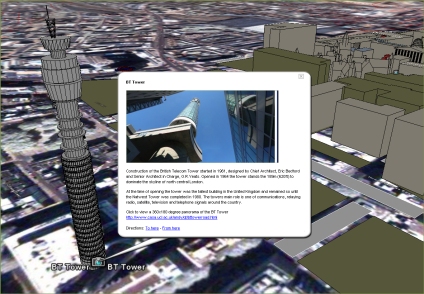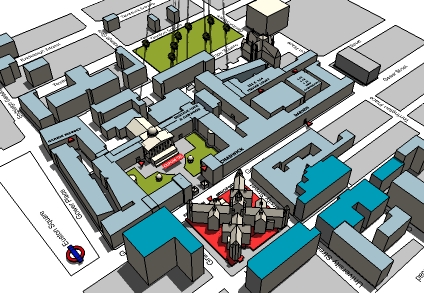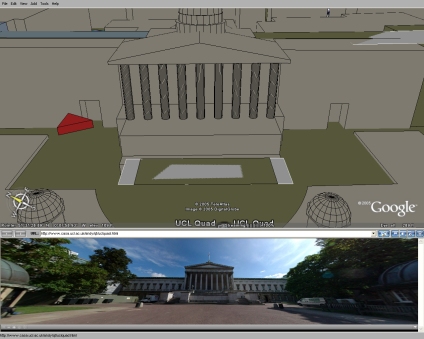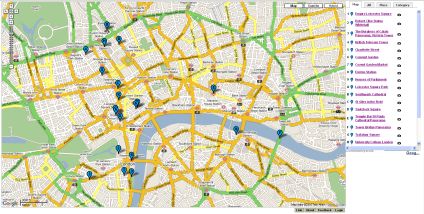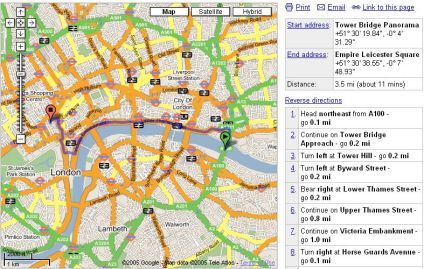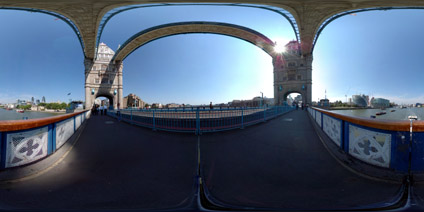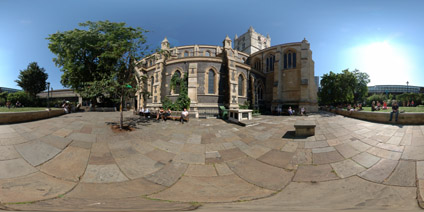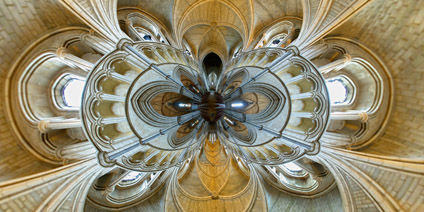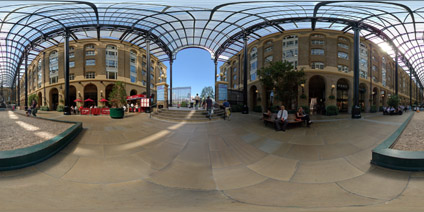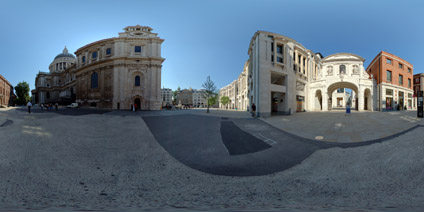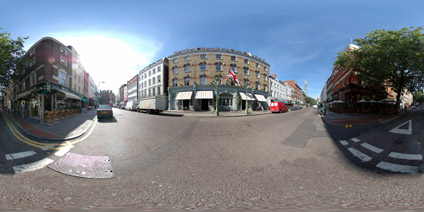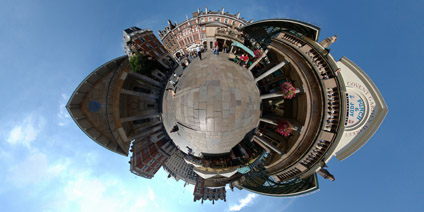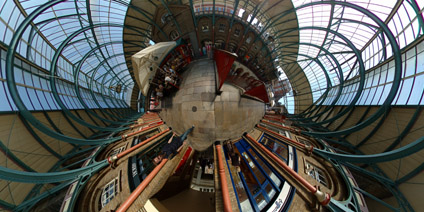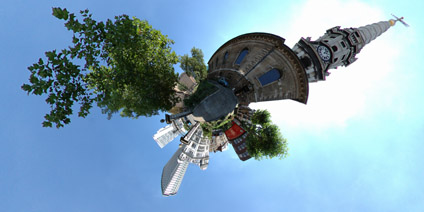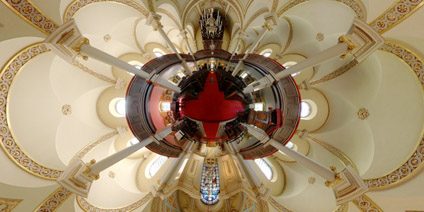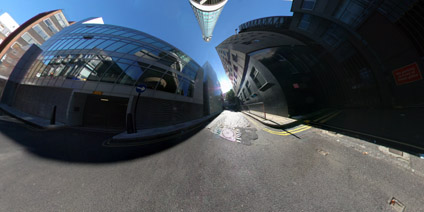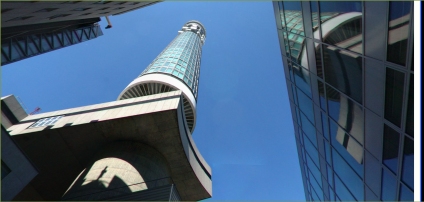
RealViz has released an update to its once impressive panorama stitching software in the form of Stitcher 5. The majority of the panoramas in this blog were stitched in its previous version 3.5 and as such version 5 has been hotly awaited.
It has a number of new features, including an automatic stitch mode and the ability to add control points for those difficult alignments. At $580 Stitcher has always been a 'high end' option and so we took the new version for a test drive with a series of simple test images.

The images we used were captured outside the London Globe Theatre using a Nikon D70 and a 10.5mm lens. Due to various patent issues RealViz is not able to stitch such wide angle images directly so they we 'defished' beforehand using Nikon Capture 4.1.
Once loaded into Stitcher the first thing one notices is its new interface, allowing a simple point and click auto stitch. However, with the 10.5mm desfished images there is noticeable distortion so the RealViz distortion option was run to enable it to line up the images.
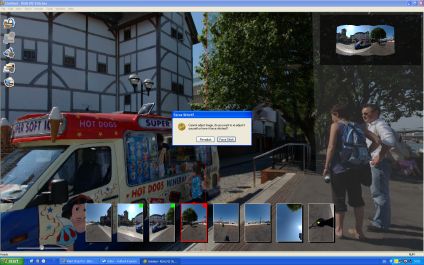
This is where Stitcher fell at the first hurdle. Using images that stitched happily in version 4 or 3.5, the new version failed to stitch the panorama. The auto stitch option featured even worse performance, failing to recognise overlaps in the images and resulting in an unusable panorama.
The images were captured using a precision panoramic rig, so the fact that Stitcher failed with such shots is disappointing to say the least, especially at the $580 ex vat price tag.
To ensure a fair test, we then ran the same images through PTgui 5.1 which also featues a recently revamped stitching engine at a mere 59 Euros.
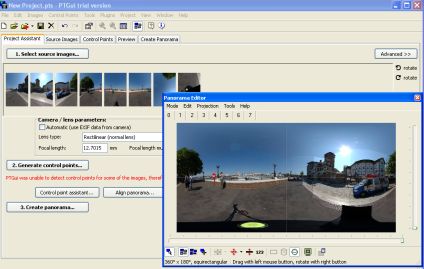
PTgui ran the autostitch first time, resulting in a new perfect panorama merged and saved in 5 minutes. They were no noticeable errors and the interface is clear and easy to use. Behind the scenes PTgui also features a number of advanced options on blending and control points, which can be offputting to the casual user but with such a precise autostitch engine they will probably never need to use them.
Stitcher 5 has been a massive disappointment where as PTgui equals in its surprise in terms of speed and accuracy. We cant even go back to our old version of Stitcher as to install the version 5 demo all previous versions need to be unintstalled first.
RealViz have a lot of ground to make up, PTgui is streets ahead and a tenth of the price. The verdict is ultimately disappointing.
We have made the images available online for any user who wants to run the same tests. You can download the zipped archive here (Saved as jpg to reduce file size 7Mb)


